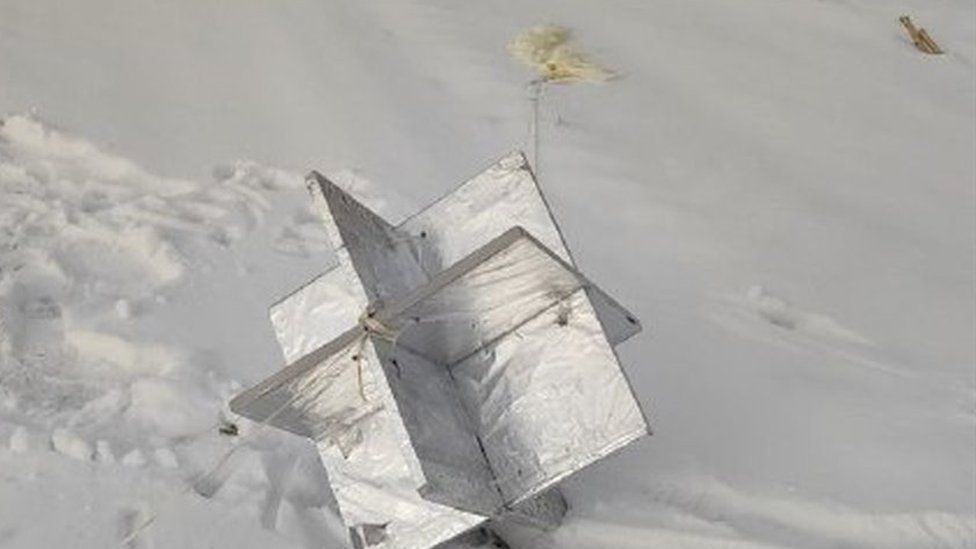Russian balloons over Kyiv in new wave of attacks
Ukraine's army chief has said Russia fired 36 cruise missiles early on Thursday, a day after six balloons were spotted over the capital Kyiv.
The missiles fired from land and sea killed a woman and hit critical infrastructure, officials said.
Ukraine noted there had been a change in Russian tactics, in an apparent reference to the balloons above Kyiv.
Most of the balloons were shot down, Kyiv's military said, adding that they were being propelled by wind power.
Images circulating on social media show an unsophisticated design, with a radar-reflecting, cross-shaped structure trailing under the balloon suspended by a line. Balloons with reflectors have also been spotted over the eastern region of Dnipropetrovsk in recent days.
"These objects could carry radar reflectors and certain reconnaissance equipment," said air force spokesman Yurii Ihnat. "The balloons were launched to detect and exhaust our air defence forces."
High-altitude balloons have raised tensions in the US recently as well as in Ukraine. And earlier this week, Romania scrambled fighter jets when an object resembling a weather balloon was spotted at a height of around 11,000 ft (3,350m). Moldova briefly closed its air space because of the unidentified object.
As the first anniversary of the Russian invasion of Ukraine approaches, the balloons appear to be an addition to Russia's aerial use of cruise missiles and cheaper Iranian drones.
The balloons have the potential to confuse radar systems and entice the Ukrainian military into launching very expensive surface-to air-missiles (Sams) at so-called "false targets".
Given the balloons' size and speed, the air force spokesman argued that Ukrainian radar was able to identify the objects correctly and on at least two occasions bring them down with bullets instead of wasting missiles.
But the balloons could also act as decoys. Ukraine constantly scans the skies for Russian aircraft and missiles using ground-based radars, many of which are part of their own Soviet-era Sam systems along with modern equivalents supplied by the West.
The Ukrainian military said the balloons had reflectors, which would entice Ukrainian aircraft defences to lock on to them.
By "soaking up" as much of that missile defence as possible, the balloons would then allow Russia's fighters, bombers, cruise missiles and attack drones to strike Ukrainian targets relatively unimpeded.
The principle is to reflect radar energy back from those Ukrainian radars which "paint" the balloons. The balloons, floating in high winds at altitude, might appear to be real Russian aircraft or helicopters, coaxing Ukrainian defences to engage them.
Russian military expert Andrei Klintsevich said Russia was using the same strategy to protect the bridge over the Kerch strait to Crimea from attack.
More sophisticated decoys have been used in past conflicts to confuse air defences. Israel is reported to have used them against Syrian Sams in the Bekaa Valley in 1982 and US aircraft in the opening hours of Operation Desert Storm, in Iraq, in 1991.
Modern Sam systems sent to Ukraine - such as Nasams, Iris-T and Patriot - may well be able to discriminate these balloon drones from real threats. But any distraction will be seen as a worthwhile tactic from the Russian perspective.
The Ukrainian air force spokesman also made the point that the balloons might be engaged in surveillance and would need thorough investigation.




No comments:
Post a Comment